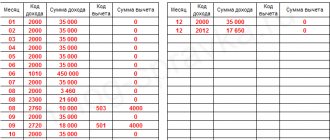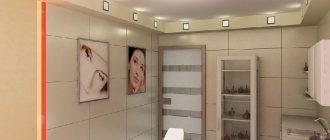Today, the question of how to open a psychologist’s office is quite appropriate. People with specialized education do not know where to start and what is needed to conduct private activities. But the demand for these services is increasing every day.
If earlier individual consultations were perceived as a whim or associated with deep mental problems, today they are a need for any active person. In the West, such a practice has long become common; in our country, private consultations with a psychologist are just beginning to become fashionable.
Relevance
The modern rhythm of life demands the impossible from a person. You need to perform many diverse functions, be able to quickly switch from one type of activity to another, and combine sometimes incompatible roles. People experience incredible stress at work, at home, and even on the commute.
Today there is rarely an opportunity to communicate with friends and loved ones, and even they will not always be able to understand and support. Psychologists are able to help you out of a crisis, help you find yourself in life, decide on goals, resolve internal conflicts and establish communication with people around you.
But a specialist who is well versed in human destinies and souls is not always able to independently organize private activities. Therefore, it makes sense to establish a partnership between a psychologist and an experienced entrepreneur.
The first will be responsible for providing quality services, and the second will be responsible for organizational and administrative issues. Although it is possible that the specialist himself will be able to open a psychological office on his own.
Where to begin?
To conduct official activities legally, you must register as an individual entrepreneur or LLC. The first option is suitable for those who independently decide to provide individual services. In this case, the paperwork process will not take longer than a week, and the state fee will be small.
The second option is suitable for cases when several psychologists decide to organize a joint business. Then you will have to submit all the statutory documentation, pay the state fee and wait about a month for the decision of the government authorities.
What additional documents should be submitted? Don't forget about these points:
- Decide on a suitable taxation system - to switch to a simplified scheme, you must submit an application within the first month after registration or immediately with the main package.
- Specify OKVED codes – 85.12 for the provision of psychological consultations or 93.05, which includes various personal services.
- If your work involves psychotherapy and other types of treatment, then you will need to obtain the appropriate license.
- It is advisable to have on hand documents confirming your specialized education.
- Register with the statistical authorities, Pension and Social Funds.
How much does it cost to open a psychologist's office?
This business includes the following expenses:
- payment for rent of premises;
- payment for electricity;
- payment for an advertising campaign;
- purchase of office equipment;
- purchasing furniture;
- purchase of consumable creative materials and office supplies.
Sources of income:
- provision of individual psychological services (usually payment is hourly);
- conducting social interaction trainings.
That is, he will conclude: the initial investment will be at least 100,000 rubles.
Setting up an office
There are several ways to organize your workspace:
- consult clients at home;
- visit them in person;
- rent premises for professional needs.
In the first option there is a huge disadvantage for the psychologist himself. You violate your own boundaries, let clients into your life, and also deprive your household of personal space.
The second method is no better. After all, in this case, a specialist (most often a woman) exposes herself to danger, since she is left alone in an unfamiliar place with a stranger. You will also need to additionally spend significant amounts on city or private transport.
And only the third option is correct when organizing your workspace. In a separate office, everything can be arranged so that the client and professional feel as comfortable and safe as possible. And although this will require you to spend a significant amount on rent, it is necessary.
Think about where exactly the office will be located. To ensure privacy, it is desirable that the building have two exits, and placement on the ground floor is also preferred. Try to choose a place that can be easily and quickly reached, but where the front door is not in sight.
Pay attention to the interior and zoning. Be sure to put into practice your knowledge of the psychological perception of light. Create the most convenient and comfortable relaxing environment possible. For this purpose, pleasant pastel colors, white, blue, green shades are used. Try to place the lighting lamps in such a way that the light spreads evenly and softly throughout the room.
Zone the space correctly. There may be a desk in the office, but for confidential communication with clients it is desirable to be able to move to a sofa or comfortable chairs.
For a play area or various types of therapy, additional space should be allocated, specially equipped for this. The main thing to consider when creating a work environment is the client’s comfort and the opportunity to relax emotionally.
The only equipment you will need is a computer or laptop for maintaining documentation, as well as a safe or cabinet for storing confidential information and personal files. If necessary, you can install sound insulation on the walls so that no unnecessary sounds disturb visitors, and their secrets remain inside the office.
IN AN EDUCATIONAL INSTITUTION
A psychologist's office is a specific room that functionally serves certain purposes, and it is also part of the developing subject environment, an element of microspace, subject to important ergonomic laws of developing children's activity.
As for a mass educational institution, where children spend most of their time and one psychologist serves a large contingent of children, it is necessary to consider the psychologist’s workplace as part of the living environment. And this environment must meet the general principles of “richness, science-intensiveness and contain natural and sociocultural means that ensure a variety of child activities.” This environment must also meet the criteria of functional comfort. First condition. It is more convenient to locate a psychologist’s office on the ground floor, since psychologists see not only children attending the institution, but also their parents.
The second condition: there must be maximum isolation, both territorial and sound. This means two particularly important points: the office should not be a walk-through or adjacent to premises such as physical education and music rooms. The third condition: the office is a symbol of the psychologist’s place of work. It would be more correct to imagine it as a room divided into three areas of activity, each of which is very specific both in terms of equipment and functional purpose: diagnostic, correctional, relaxing.
A specially equipped office of a practical psychologist (PPP) can function on the basis of a regular office of a teaching and educational institution. Its task is to provide timely qualified advisory and methodological, psychological and psychocorrection assistance to various categories of the population, including students of different levels of development and age, their parents, as well as solving problems of socio-psychological rehabilitation and adaptation. A room or a separate classroom with an area of at least 25-30 m should be allocated for the office of a practical psychologist, so that 10-12 people can be in it at the same time, work with whom should take place in comfortable conditions.
Temperature regime. The room should be warm and at the same time well ventilated. In winter, due to increased dryness of the air, you can use the “Comfort” device to humidify and ionize it; It is advisable to have an air conditioning unit. The optimal temperature is considered to be between 20 and 22° C.
Soundproofing. To isolate from corridor noise, the room can be equipped with a double door. The maximum sound volume of recordings is 30 dB (muffled speech). During classes, a warning about maintaining silence must be posted on the front door.
Material and technical equipment and organization of the office space The implementation of a complex of psychocorrection and rehabilitation measures involves conducting classes in a specially equipped room, which must meet the appropriate conditions and requirements for the technical support and equipment of the psychological office:
Technical means: VCR, TV, stereo with a set of video and audio cassettes, computer, printer, photocopier, video camera.
Methodological materials: practical materials for psychological work at school; a set of toys and board games appropriate for the age of the children; a set of various materials (building material, plasticine, paints, colored pencils, markers, paper, etc.); Library of a practical psychologist; handouts for students, parents and teachers, participants in socio-psychological training groups or for other group classes.
Documentation: There should be folders with the necessary documentation in the psychologist’s office
List of documentation
- Annual work plan approved by the head of the educational institution.
- Logbook of work performed
- Schedule
- Programs and methods of psychoprophylactic, diagnostic, developmental, correctional, consulting and other types of work.
- Analytical report on the work carried out for the year, approved by the head of the educational institution.
Furniture: a psychologist's desk, a cabinet for manuals, a cabinet for equipment, children's workplaces, a coffee table, 2-3 soft armchairs or sofa chairs. Additional tools for interior design: room partitions, flowers, aquarium. Partitions can be a rack or a composition of flowers and plants.
METHODOLOGICAL SUPPORT FOR THE WORK OF TEACHER-PSYCHOLOGIST
All areas of work of a practical psychologist’s office require methodological, organizational and technical support, which, of course, contributes to the effective functioning of the checkpoint.
Selection of methodological tools
The choice of examination method is one of the difficult stages of the diagnostic and correctional work of a practical psychologist. From the variety of currently existing diagnostic methods, it is necessary to be able to choose those that correspond to the goals and objectives of the study, as well as a number of important principles. These principles are directly related to the organization of methodological equipment for a practical psychologist, determining the necessary minimum of diagnostic tools in the work of a novice specialist. Let us list these principles.
1. The available arsenal of techniques in the office of a practical psychologist should be multidirectional in nature, covering all aspects of a person’s mental life, including mental processes, properties, states, personality orientation, its attitudes, value orientations, intellectual level, features of interpersonal interaction, stress resistance and behavioral reactions in tense situations, etc.
2. A practical psychologist’s office should have methods for different age groups. Methods developed in scientific psychology and tested in practice, when used at an early age, require special modification, providing for a deep psychological analysis and competent interpretation of a complex of different indicators in their dynamics. In child psychology, it is necessary not only to focus on what the child can currently accomplish, but also to predict what he is able to achieve in the near future, what his “zone of proximal development” is. This is especially important when diagnosing developmental disorders; in connection with this, it is necessary to develop separate diagnostic techniques in the form of a teaching, formative experiment.
3. Methods for both individual and group research should be presented.
4. Since a psychologist often needs operational information, methods that are not associated with a cumbersome processing procedure and allow for rapid diagnosis become of great importance. It is advisable to use so-called functional tests as express methods in a psychological office.
5. Modern technologies make it possible to equip the offices of practical psychologists with computer diagnostic techniques, which significantly saves time, reduces the cost of preparing test material and forms, and simplifies the procedure for processing results. However, despite the undoubted advantages of computer psychodiagnostics, one should not get too carried away with it, since dialogue with a computer does not replace direct emotional communication between the client and the psychologist, when empathic interaction, acceptance, trusting contact and a sense of understanding are included, which is the purpose of contacting a psychologist.
Requirements for methods
The methods that form the methodological basis of the office of a practical psychologist must meet certain requirements: - the goals, subject and scope of application of the method must be clearly formulated; — the area of application must be clearly identified, which means a special social environment or sphere of social practice, the contingent of subjects (gender, age, education, professional experience, job position); — the content of the methodology must include a clear statement of the processing procedure, statistically sound methods for calculating and standardizing test scores; — methods must be tested for representativeness, validity and reliability in a given field of application; — blank methods must be presented on separate sheets, carefully verified spelling and grammatically; — methods containing drawings and text material must be clearly printed. Methods that do not meet the above requirements cannot be recognized as a professional psychodiagnostic tool. A practical psychologist has the right to use only certified psychodiagnostic techniques.
Equally important is the selection of psychological means for correctional work, including a variety of handouts : - balls, toys, children's crafts, - soft ball-chairs, building transformers and other materials that can be used in play therapy or fairy tale therapy.
The effectiveness of using various psychological means of influence increases significantly when they are used in a complex manner as interacting and complementary. This approach is important both in the process of psychological diagnosis and subsequent correction, and in sessions of psychological support, relieving psycho-emotional stress, and teaching self-regulation skills. Such means include, in particular, audiovisual means, gaming materials used in play therapy, music therapy and movement therapy. The psychologist of the school psychological office bears full responsibility for the implementation of correction and development programs, the effectiveness of recommendations and the final result. To evaluate his work, a psychologist can use specially designed questionnaires. Based on the results of a survey conducted regularly at the end of a certain cycle of classes, it is possible to analyze the adequacy of the selection of methodological tools and developmental programs for individual work with students of different ages, to assess the dynamics of the child’s achievements (for example, changes in the level of his personal anxiety or resistance to stress, etc.). When conducting projective techniques with children of different ages, one should take into account the special situationally determined impressionability of the child’s psyche. Even the most inexperienced parent in the study of children's creativity noticed that after watching the film, children draw and sculpt something in accordance with the theme of the film. In this way, they experience the impressions they have just received and work to assimilate new experience. Therefore, one should not interpret in any special sense a drawing of a family if, after watching a cartoon about “Crocodile Gena and Cheburashka,” a child drew his dad as a crocodile [Shmelev, 1999]. When working with schoolchildren, it should be taken into account that children have not yet fully mastered social norms and for them “lie scales” work poorly or do not work at all. The younger the student, the less suitable questionnaires are for him. In child psychodiagnostics, the results of diagnostic procedures also turn out to be unreliable for the reason that children do not always absolutely correctly understand the meaning of what is required of them in the methodology. The speech development of children under 12-13 years of age does not allow them to clearly understand the meaning of many instructions and questions. Therefore, school psychologists should not be overly carried away by verbal techniques that use speech stimulus material.
MUSICAL MEANS
One of the psychological means of influence during individual and group lessons in the office of a practical psychologist is specially selected musical programs, the influence of which is characterized by multifaceted changes in the functional state of the human body. Thus, by varying the musical background, you can influence mood, induce a state of rest or excitement, control a person’s performance or enhance relaxation.
Generalized characteristics of musical works reflecting a similar emotional state
| Main settings | Basic Mood | Literary definitions | Titles of Works |
| Slow | Calm | Lyrical, soft, contemplative, elegiac, melodious, thoughtful, tender | A. Borodin: Nocturne from String Quartet; F. Chopin: Nocturnes in F major and D major (extreme parts); F. Schubert. "Ave Maria"; K. Sen - Sans. "Swan"; S. Rachmaninov. Concerto No. 2 (beginning of movement II) |
| Slow Minor | Sadness | Gloomy, dreary, tragic, sad, sad, mournful | P. Tchaikovsky. Fifth Symphony (beginning), Sixth Symphony (final) E. Grieg. Death of Ose, Ingrid's Complaint from the Peer-Gynt Suite; F. Chopin. Prelude in C minor, March from Sonata in B flat minor, Etude in C sharp minor; K. Gluck. "Melody" |
| Fast Minor | Anger | Dramatic, excited, anxious, restless, angry, angry, desperate | F. Chopin. Etudes No. 12, 23, 24; Scherzo No. 1, Prelude No. 16, 24; A. Scriabin. Etude No. 6 Op. 8; P. Tchaikovsky. Overture "The Tempest"; R. Schumann. "Rush"; L. Beethoven. Sonatas No. 14, 23 (finals) |
| Fast Major | Joy | Festive, jubilant, cheerful, cheerful, joyful | D. Shostakovich. Festive Overture; F. Leaf. Hungarian Rhapsodies No. 6, 10, 11, 12 (finals); W. Mozart. Little Night Serenade (parts I and IV); L. Beethoven. Symphonies No. 5, 6, 9 (finals) |
Music therapy can be an effective method of treating school neuroses, which today increasingly affect not only students, but also teachers. The development of a rich emotional sphere is achieved by involving people in a wide range of musical artistic experiences, the formation of an emotionally positive perception of the world, and an optimistic worldview. If we consider a session of music psychotherapy from the perspective of the possibility of influencing the physical, emotional and intellectual spheres of the body, then, since music is the language of non-verbal communication, we can expect the greatest effect in influencing a person’s feelings and moods, weakening negative experiences in the process of their cathartic release under the influence music.
ORGANIZATION OF OFFICE SPACE
Taking into account the specifics of the tasks, the office of a practical psychologist should geographically include several zones, each of which has a specific purpose and appropriate equipment. It is necessary to separate the waiting area and the advisory area.
The reception waiting area is a part of the room separated by a partition from outsiders and those visitors who are already at the checkpoint. It is recommended to use flowers extensively. There should not be any posters on the walls, especially medical ones, so as not to cause unwanted associations among children and their parents.
The area for initial reception and conversation with the client is equipped with a desktop, a file cabinet with data about children, teachers, parents as clients of the office, and a closed file cabinet containing data and examination results that should be inaccessible to outsiders. The cabinet contains psychological tables, posters, teaching materials and other tools for psychological examination of clients.
The consultation work area is designed as comfortably as possible. A coffee table and comfortable soft chairs, dim lighting from the side sconces create an atmosphere of comfort, security, promote relaxation, calm, and promote open, trusting communication in individual, group or family counseling.
The play therapy area is of particular importance and therefore should be appropriately equipped: soft flooring; movable furniture that facilitates quick changes in the situation in the game plot; toys, craft materials, pencils, albums. Children's crafts, drawings, and bright interior decoration are appropriate here. Color design and phytodesign complement each other in creating a “children's space.” All this makes it easy for children to adapt to working conditions in the office and helps relieve tension.
The area for relaxation and relieving psycho-emotional stress involves the free placement of comfortable soft chairs for relaxation. The effect of relaxation and relief of muscle tension can be achieved under the influence of certain elements of the environment (aquarium, light music, slide images), as well as functional music. Therefore, you need a tape recorder with a set of cassettes. In this area of the psychological office, you can conduct classes and autogenic training sessions with viewing slide programs and video programs with musical accompaniment. These classes are especially important in our time, as the number of children and adults who have experienced traumatic stress is increasing. All these zones, in fact, correspond to the goals and objectives of the functioning of the school psychologist’s office, the main contingent of which are students of various ages, their parents and teachers.
ORGANIZATION OF PHYTODESIGN
The school psychologist's office must have plants that help create optimal sanitary, hygienic and aesthetic conditions for classes and recreation. They can also perform the functions of a professionally organized space, when flowers, flower racks and walls act as functional partitions separating various areas of the office (the reception area, for example, from the play area or advisory area). When composing the interiors of a psychological office, you can place in them fresh flowers, green grass lawns, phytocompositions, and sometimes chirping birds in order to more fully imitate an ecological space, which is designed to have a beneficial psychological effect on clients, especially during those hours when they are most susceptible to this (fatigue at the end of a working day, emotional arousal due to intense social contacts). An organic complement to the comfortable conditions of phytodesign is the use of recordings of natural sounds during classes: the noise of the forest, the sea surf, birdsong, which has a very beneficial effect on children of different ages.
LIGHT-COLOR DESIGN OF THE OFFICE
When organizing a practical psychologist’s office, it is necessary to pay serious attention to its light and color design. Lighting . Light intensity should be adjusted over a wide range (from bright lighting to complete darkness). Combined lighting is recommended, both fluorescent and incandescent lamps. Before and after restorative relaxation or developmental activities, regular overhead lighting is used; During special classes, the side wall sconces turn on with a weak green light. It is better to point all lamps at the ceiling to provide soft, diffused light. Color climate. Color affects a person's mental state and can change his mood. The environment in which the client finds himself should be conducive to dialogue and trusting communication. Therefore, when designing an office, it is important to take into account the requirements of color psychology. According to the effect of color on a person, all colors can be divided into two groups: warm (shades of red and yellow) and cold (bluish-violet tones). Green and blue colors have the most beneficial effect on vision and the central nervous system (CNS). All light colors have a good effect on a person’s psychophysiological state and cause a good mood. Dark tones and rich shades of color are depressing and cause a depressed state. Red and yellow colors excite and activate the central nervous system.
A person’s sensations change depending on the color environment: yellow and light yellow-green colors evoke the feeling of something light, and vice versa, dark tones of violet-blue evoke something heavy. Blue furniture creates a cold feeling. Subconsciously, there is a feeling that sitting on “blue” is not as “warm” as sitting on red or brown. A room painted orange appears to have a higher temperature than a room painted blue-green, even though the temperature in both rooms is actually the same. In a room, especially with poor lighting, ceilings and walls painted white appear gray. This cool color does not create the impression of a bright room. From a psychological point of view, painting a room white is tiring and has an adverse effect. White color works well when used as a background for other colors. When organizing the office of a practical psychologist, it is important to take into account the psychological impact of the color of the door in the office. The door is an important part of the room and almost always evokes certain psychological associations. Depending on the color of the doors, they seem to invite you to enter the room or, conversely, do not invite you to do so. Negative emotions and reluctance to open them are caused by doors painted in a gloomy gray color; painted in cheerful colors - improve your mood.
Color is also associated with hearing. With noise, the function of visual receptors increases and therefore the perception of green color becomes more intense, and the increased perception of green color “covers” the noise to a certain extent. Thus, sharp acoustic stimuli can be muffled by corresponding light stimuli. Harsh noise will be perceived more calmly in a room painted olive green, swamp green or dark brown.
Research from the Institute of Color Psychology in Zurich (Switzerland) has shown that children prefer one color or another depending on their age.
The relationship between light and human psychological characteristics
| Age (years) | Preferred Color | Color that evokes a negative attitude | Predominant psychological state |
| 4 – 10 | Red, purple, pink, turquoise | Black, dark brown, gray | Stay in the world of fairy tales |
| 11 – 12 | Green, yellow, red | Olive, pastel green, lilac | The predominance of sensory perception of the world |
| 13 – 16 | Ultramarine, blue, orange, (green) | Violet, lilac | Rational approach to the perception of the world, development of self-awareness |
| 17 – 19 | Red-orange | Purple, pink | Instinctively purposeful perception of the world |
The same design technique for different elements of a room has different effects on people. A person can easily tolerate a floor painted like a chessboard. The sight of such sex does not haunt him. But walls painted in the same way make an unpleasant impression. So, when examining a room, often more attention is paid to the walls and precisely their lower part. Color division of walls can optically lengthen them. When painting walls, you should use more intense colors compared to the muted color of the floor. Depending on the location of the color in the room, it can affect a person differently.
The characteristic effect of color on a person.
| Color | The effect of color on a person when this color is placed | ||
| Up | On the side surfaces | At the bottom | |
| Orange | Protects and concentrates attention | Warms, envelops | Burns |
| Brown | Covers, weighs down | Gives an impression of earthiness, substance | Instills confidence |
| Blue | Creates an impression of lightness, friendliness, and heaven | Cools, alienates | Creates comfort for walking |
| Yellow | Makes it easier, fun | Excites | Raises |
Classification of colors according to their psychological effects on humans. 1. Stimulating (warm) colors red - strong-willed, life-affirming, able to encourage action orange - warm, cozy, conducive to intimate conversation yellow - promotes better contact 2. Disintegrating (cold) colors purple - stimulates immersion in oneself blue - removes, creates distance 3. Calming and balancing colors green - refreshes olive - soothes, softens yellow-green - liberates 4. Muffling and suppressing irritation ocher - softens the growth of irritation brown, earthy - stabilizes dark brown - softens excitability white, gray - dampen irritation dark gray, black-blue, green-blue - isolate and suppress irritation 5. Pastel colors pink - causes a feeling of tenderness purple - increases isolation and isolation pastel green - softens greyish-bluish - causes restraint These effects of color on the state of the psyche should be used when layout of the functional areas of the office depending on the tasks of the work. the waiting area and consultation area so that the color scheme of the space ensures relative peace, a mood for dialogue, and free communication. Therefore, you should not use saturated shades of red-orange, and it is also not recommended to create sharp color contrasts in perception. The color scheme of the zones should be consistent in basic colors. The play psychotherapy area is decorated using bright, saturated colors, sometimes in sharp contrast. The zone of relaxation and relief of psycho-emotional stress should not be oversaturated with small details, they will irritate and have a stimulating effect, not a relaxing one. For the same reason, it is not recommended to use bright shiny surfaces. Relaxation sessions are best conducted in a semi-darkened room, which promotes relaxation and stress relief. Curtains on windows should be made of light-proof fabric. The effect of relaxation and relieving psycho-emotional stress can be achieved under the influence of certain elements of the environment and light-colored design of the office. The color of walls, floors, furniture, curtains is selected in calm and neutral tones that do not cause additional excitement or irritation; in a color-light interior, blue and green colors are preferred (the ceiling is blue to imitate the sky, the floor covering is in green tones. It is known that the life of an adult is built on the basis of his childhood development. What can influence a child’s behavior? What will his character be like? Why does he behave behave this way and not otherwise? These are the questions that are relevant for parents and educators of preschool children. These and many other questions can be answered by an educational psychologist.
Specialization
It is worth mentioning separately the presence of higher psychological education. If you act within the framework of the law, then it is not mandatory, since the project according to which an official document will become necessary is still being considered by deputies. However, from 2020, any provision of social services requires appropriate preparation. Therefore, it is still better to have a diploma in psychology.
Without education, you will not only be unable to provide high-quality advice, but you will also face distrust from clients. And with any complaint from dissatisfied visitors to the prosecutor’s office, you can even receive fines or a ban on conducting business.
This is quite enough to carry out simple consultations, help in determining inclinations, personality traits, aspects of character, and other areas of testing. But if your activity involves a deeper immersion in mental problems, treatment and psychotherapy, then it already belongs to the medical service sector.
In this case, government agencies must provide a document confirming a higher education in psychiatry, and the specialist must undergo special specialized training in the chosen area of psychotherapy. Only after this can you obtain the appropriate licenses and permission to conduct such activities.
It is also advisable to decide in advance what area you are going to specialize in. It's rare that a professional can boast of versatility. So think about whether it will be children's therapy, couples counseling, solving social or work difficulties, etc.
Conducting psychological work in a psychologist’s office
The work begins with drawing up a schedule for psychological assistance. It is necessary to notify as many potential clients as possible about the opening of the account.
It is also important to decide on the direction of work and what services will be provided:
- services of a child psychologist for parents (including on problems of adolescence) - resolving controversial issues and conflict situations;
- services in resolving family conflicts - assistance in resolving misunderstandings between spouses;
- services in solving social relations - solving the lack of understanding in society;
- general services according to customer requests.
At the beginning of the activity of a psychological office, you can pre-register people for the provision of psychological services. Over time this will become part of the system.
In our country it is not yet customary for each person to have his own psychologist. But increasingly, people are looking for just such specialists to solve personal problems. And it’s easier to turn to someone for help on the recommendation of friends. Therefore, the main tool for attracting new clients will be banal word of mouth.
To do this, be sure to provide only high-quality services and be responsible for your actions. Thanks to your reputation, you can ensure that good word of mouth spreads about you in the city.
But this option is only suitable for experienced professionals who have a base of regular clients. It is much more difficult for novice psychologists to find their audience. Therefore, it would be useful to use available modern means of attracting attention:
- Create a website, a group on social networks and engage in contextual advertising.
- Post information about yourself on various local forums and pages.
- You can write an article about your own activities in a magazine or on the Internet in popular resources.
- It makes sense to establish personal contacts with hairdressers, massage therapists, nail salons, etc., where, in a confidential conversation, specialists will advise you on personal problems with clients.
- Use printed products (ads, business cards, leaflets) and leave them in places where your potential clients often visit (cafes, educational institutions, clinics, beauty salons).
Since starting a private practice may not meet your expectations, it is better to get insurance. To do this, in addition to individual consultations, it is advisable to have a permanent place of work, at least until you have enough clients to reach full payback.
Risks of your own project
Having learned how to open a psychologist’s office and what is needed for this, you should not immediately make a responsible decision. It’s better to once again weigh all the pros and cons and draw up a business plan in order to imagine what difficulties may await you ahead and objectively assess your own strengths. So, there are several risky points in this direction:
- It is very difficult to develop a client base, as discussed above. You must not only prove yourself as an expert and professional in your field, but also have marketing skills in attracting new audiences. And this is not easy for everyone. It may make sense to enlist the support of an experienced entrepreneur who will develop the business in this direction or pay for the services of a company that specializes in advertising activities.
- Today there is huge competition in this direction. And although the demand for psychological services is growing every year, the number of psychologists is increasing exponentially.
- It is difficult to determine whether counseling helped in each case. After all, if it is quite simple to evaluate the result of any medical intervention even without special education, the effectiveness of psychological techniques is sometimes questionable. In addition, in each case, a specialist will also not be able to guarantee any result.
- There is no regulatory framework and clear legislation regarding this activity yet. This contributes to the emergence of dubious “professionals” who, in general, ruin the reputation of real psychologists.
- Due to the lack of entrepreneurial skills, it is difficult for a person to organize his work in such a way that it is truly profitable and profitable.
- Sometimes it happens that, having created his own client base and completely immersed himself in private counseling, a psychologist stops engaging in annual training and does not keep up with new products and modern techniques. Lack of professional growth will affect the quality of services provided and the number of clients.
What does it take to become a psychologist?
In the minds of most people, there is a stereotype that a psychologist sits in a chair opposite a client and carefully writes down what he says and makes recommendations. In fact, this is far from the case. Psychology is a vast science, and each specialist works in his own field. For example, a psychologist in a antenatal clinic will help girls and women survive a miscarriage or persuade them to have an abortion. Psychologists in large organizations will advise managers on ways to effectively manage people. A specialist working in military institutions will help military personnel return to normal life after serving in hot spots or help newcomers adapt. These are just a few real life examples. And many of them are in private practice.
In general, there are only 2 requirements for a psychologist:
- Special education.
- Experience in their chosen profile.
First you need to decide what you want to do, that is, who you plan to consult. For example, these could be married couples with relationship problems. Or people suffering from tobacco addiction.
Pros and cons of the profession
The first plus is the high demand for specialists. A good psychologist who helps people solve their problems never has the question “where to find a client?” As a rule, they conduct appointments by appointment, and the schedule is drawn up a month in advance. The second advantage is obtaining the necessary knowledge for yourself. An undoubted plus is pleasure and satisfaction from the work done.
The disadvantages include constant stress caused by difficult situations and client behavior. Also, the Psychologist needs to constantly monitor his condition so that it does not affect the quality of his work and clients.
Financial questions
To estimate how much money it will take to open a psychological office, you need to calculate all the expense items. In each case they differ depending on the situation, but the main points are as follows:
- Renting premises.
- Required furniture and technical equipment.
- Advertising campaign.
- Payment of utilities, etc.
As a result, the amount of total investment in the business will depend on how much money is spent on each item. It is believed that with minimal costs, 100-300 thousand rubles will be required. But it is obvious that for cities with a population of over a million and Moscow this will not be enough.
Payback also differs significantly from the chosen direction, level of professionalism, number of attracted clients, etc. In this matter, it is important to set prices correctly. First you need to find out what prices competitors offer in your region.
Try to keep your rates in the middle range. After all, if you lower the price too much, you will scare away most people who will think that you yourself do not believe in your own strengths and professionalism. At an inflated cost, only wealthy clients can be expected.
According to average indicators, for a month of operation of a psychologist’s office it is realistic to receive about 40 thousand rubles. Moreover, all investments will be fully recouped in less than a year. But it is obvious that the more was spent initially, the longer it will take to return the investment.
Video: how to open a psychologist’s office?
Expenses and income: how much will the investment pay off?
You rented an office, you have a diploma in psychology and an additional certificate. You have decided that you will counsel people with relationship problems and couples. By the way, receiving spouses is more expensive.
First, let's look at the startup costs. Let's take a city with a population of 600-700 thousand people as a basis. Office rent – 1000 rub. per sq. m., area – 10 sq. m. A computer desk with several drawers costs 5.1 thousand rubles, an office chair – 4.5 thousand rubles, 2 chairs – 2 thousand rubles. A cozy sofa can be purchased for 15 thousand rubles, armchairs for it - 8 thousand rubles. a piece. Most stores offer a discount for large purchases. We will count without her.
A cooler would be a good idea. For example, the client may cry and ask for water.
Costs of opening a psychologist's office:
| Expense category | Price |
| Rent (3 months) | 30,000 rub. |
| Furniture | RUB 42,600 |
| Computer | 25,000 rub. |
| Music Center | 5,000 rub. |
| Cooler and water | 3,000 rub. |
| Total | RUB 105,600 |
Now let's look at regular expenses. You will need to pay monthly:
- office rental;
- housing and communal services;
- water for the cooler;
- stationery
- advertising.
In addition to paying rent, you need to pay for utilities. If you rent an office in a business center, housing and communal services include payment for electricity, water and cleaning staff. We add another 3 thousand rubles to the office rent. You need 4-5 bottles of water for the cooler per month. At a cost of 140 rubles. per piece per month it will cost 700 rubles. For stationery – 500 rubles, advertising – 5 thousand rubles. The costs will look like this:
| Expense category | Price |
| Office rental | 10,000 rub. |
| Housing and communal services | 3,000 rub. |
| Water for cooler | 700 rub. |
| Stationery | 500 rub. |
| 5,000 rub. | |
| Total | 19,200 rub. |
Now let's move on to income. Before you set a price per appointment, find out what your competitors are charging. In cities with a population of 1 million or more, a consultation with a psychologist costs from 2,000 rubles, in small cities – 1,000-1,500 rubles. The more experience a psychologist has, the higher the price. Short-term therapy consists of 10 sessions. If the client has a large number of problems that he needs help solving, then there will be more sessions.
One session will cost 1,500 rubles. In the first week, 6 clients came, of which 4 agreed to short-term therapy. Each of them goes once a week. Plus, 1 new client arrives every day.
| A week | Number of clients | Sum |
| 1st week | 6 | 9,000 rub. |
| 2nd week | 9 | 12,000 rub. |
| 3rd week | 9 | 12,000 rub. |
| 4th week | 9 | 12,000 rub. |
| Total | 45,000 rub. |
Thus, in the first month you can earn 45 thousand rubles. If you receive 3 clients per day, your income will be higher. At a minimum, you will receive 90 thousand rubles per month. a constant flow of customers is not a constant value. Someone decided to refuse your services, someone got sick, and as a result, the amount of income will change. 45 thousand rubles. per month is the optimal amount you can count on. All investments will pay off in 3 months.
We took the average prices for the country. They will differ in different regions. That is, it will be cheaper to open a psychologist’s office in one region than in another, and vice versa.
Don't forget to improve yourself. Once a year, take courses in your field, read books that talk about new ways of conducting sessions with clients.
Try to acquire so-called VIP clients. It's difficult, but if you do a good job, they will recommend you to their friends and acquaintances. Accordingly, your earnings will increase. Nowadays it is fashionable to conduct trainings. If you master this area, people will regularly come to you asking you to implement it in their team.
Reviews
Alina: “High competition and too little awareness of people about the activities of psychologists make such a project very risky. It’s better to have a stable place of work, and conduct personal consultations by appointment in offices that can be rented for an hour or two.”
Marianna: “It’s better not to engage in this business without education. Most clients are initially interested in your qualifications, experience, and special knowledge. And the point here is not so much in state laws, but in the willingness to trust a stranger.”
Nikolay: “A very successful decision was to combine the strengths and financial investments of a businessman and a psychologist. So, everyone does what they do best, and as a result, after a year of activity, our office has become recognizable not only in the city, but also in the surrounding regions.”
Legislative acts and regulatory documents
- Federal Law “On Education in the Russian Federation” dated December 29, 2012 N 273-FZ
- Code of Ethics for Educational Psychologist
- Federal State Educational Standard (FSES)
- Professional standard “Teacher-psychologist” (psychologist in the field of education)
- Order No. 1014 of August 30, 2013 “On approval of the procedure for carrying out educational activities in basic general education programs - educational programs of preschool education” (as amended as of January 21, 2019)
- Order of the Ministry of Education of the Russian Federation dated January 21, 2020 No. 32 “On amendments to the Procedure for organizing and implementing educational activities in basic general education programs - educational programs of preschool education, approved by Order of the Ministry of Education and Science of the Russian Federation dated August 30, 2013 N 1014”
- Order No. 373 of July 31, 2020 “On approval of the procedure for carrying out educational activities in basic general education programs - educational programs of preschool education” (comes into force on January 1, 2021)
- Letter of the Ministry of Education of the Russian Federation No. 70/23-16 dated 04/07/1999. “On the practice of diagnosing child development in the preschool education system”
- Instructive letter dated December 24, 2001 No. 29/1889-6 “On the use of working time of a teacher-psychologist at an educational institution”
- Resolution No. 88 of April 21, 1993 “On approval of standards for determining the number of personnel engaged in servicing preschool institutions”
- On the introduction of the position of psychologist in public education institutions. Letter of the Ministry of Public Education of the RSFSR dated May 30, 1989 No. 542/13
- On approval of the Regulations on the service of practical psychology in the system of the Ministry of Education of the Russian Federation Order of the Ministry of Education of the Russian Federation dated October 22, 1999 No. 636
- On approval of the Regulations on the Psychological, Medical and Pedagogical Commission. Order of the Ministry of Education and Science of the Russian Federation dated September 20, 2013 No. 1082 Moscow
- Letter of the Ministry of Defense of the Russian Federation dated January 22, 1998 No. 20-58-07 in/20-4 “On speech therapists and educational psychologists in educational institutions”
- Letter of the Ministry of Education of the Russian Federation dated June 27, 2003 No. 28-51-513/16. Methodological recommendations for psychological and pedagogical support of students in the educational process in the context of modernization of education
- Appendix to the letter of the Department of General and Preschool Education dated February 17, 2004 No. 14-51-36/13 “On the use of individual adaptive development programs in preparing children for school”
- Decree of the Government of the Russian Federation of August 8, 2013 No. 678 “On approval of the nomenclature of positions for teaching staff of organizations engaged in educational activities, positions of heads of educational organizations”
- Order of the Ministry of Education and Science of Russia dated May 11, 2016 N 536 “On approval of the Peculiarities of working time and rest time for teaching and other employees of organizations engaged in educational activities” (for educational psychologists - paragraph VIII)
- Decree of the Government of the Russian Federation of May 14, 2015 N 466 “On annual basic extended paid vacations”
- Decree of the Government of the Russian Federation of April 7, 2020. No. 419 “On amendments to the annex to the Decree of the Government of the Russian Federation of May 14, 2020 No. 466”
- Letter of the Department of State Policy in the Sphere of General Education dated July 20, 2017 No. 08 -PG-MON-26725 “On the regulation of issues of education of persons with disabilities and limited health capabilities”
- Concept for the development of psychological services in the education system in the Russian Federation for the period until 2025 (approved by the Ministry of Education and Science of Russia dated December 19, 2017)
- Letter of the Ministry of Defense and Science of the Russian Federation dated July 30, 2020 No. 07 - 4587 (draft standards for the staffing level of educational psychologists in educational organizations.)
- Letter of the Ministry of Education dated February 20, 2019 No. TS-551/07 “On supporting the education of students with disabilities and disabilities”
- Order of the Ministry of Education of Russia dated 09.09.2019 N R-93 “On approval of the approximate Regulations on the psychological and pedagogical council of an educational organization”
Downloads: 663, size: 4.6 MB, date: 17 Aug. 2020











